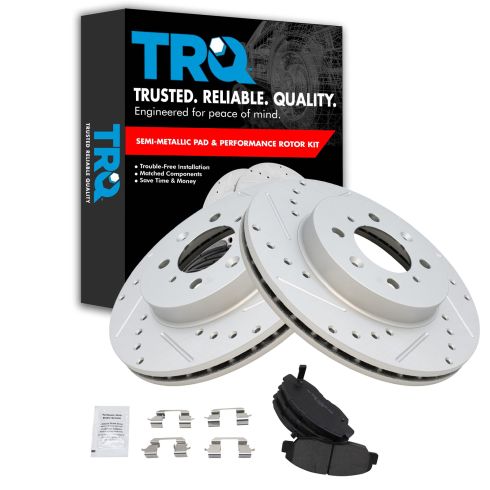1APBS00345-Honda Civic Insight Front Semi-Metallic Performance Brake Pad & Rotor Kit TRQ Performance BKA12286

Replaces
1997 Honda Civic EX Front Semi-Metallic Performance Brake Pad & Rotor Kit TRQ Performance BKA12286

Product Reviews
Loading reviews
5.00/ 5.0
5
5 reviews
Great
May 6, 2019
These arrived just when they said they would. They were easy to install and I have had no problems with them since. Great deal and worth the money spent
December 18, 2021
they work great
Rotor,pads
December 6, 2023
I am happy with my purchase,the Quality and
the price,went together fine with no problems
Would recommend
May 8, 2024
Good parts
Great breakes
October 16, 2024
Excellent quality and exceptional price
Customer Q&A
How do I know if my 99 civic hatch has 240mm rotors or 260?
January 26, 2016
10
The best way it's to remove tire and read what is print at your rotor
January 26, 2016
Maska M
Does it include driver and passenger rotors for the 69.95?
March 8, 2016
10
YES
March 8, 2016
Maska M
10
Brake Rotor Specifications:
Comes as a matched pair
Includes both LH (Driver) & RH (Passenger) Side FRONT
March 8, 2016
Brian F
10
Yes
March 9, 2016
Jacob V
10
yes. 2 rotors and 4 pads. the whole front end
March 9, 2016
Ron D
Honda is a registered trademark of Honda Motor Co., Ltd. 1A Auto is not affiliated with or sponsored by Honda or Honda Motor Co., Ltd.
See all trademarks.














